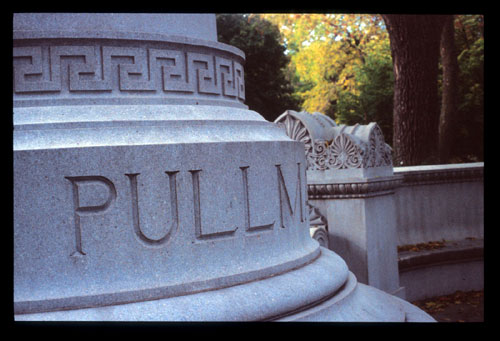UnStorming Sheridan >> Story Two >> Pullman

In May of 1894, employees of George Pullman's Palace Car Corporation, already fed up with the company's paternalism and hard line against unions, went on strike in protest of large wage cuts that left them unable to eat after paying high rents in the company-owned town at 111th and Cottage Grove in Chicago. The workers were affiliated with the American Railway Union, the first 'industrial' union to admit both skilled and unskilled workers as members. Honoring the strike, railroad workers--both ARU members and nonmembers--in 26 states across the country refused to move trains if they contained Pullman cars. Because the US mail was transported via trains that contained Pullman cars, the ARU was accused of interfering with the mails, a Federal crime. The union offered to remove the Pullman cars and handle the trains without them, but the US Attorney General, who sat on the board of directors of several railroad companies, refused and secured several injunctions against the American Railway Union. Meanwhile, civil disturbance had broken out at some railyards on the southside. Ignoring the protests of Governor John Peter Altgeld, who believed state police were ably handling the situation, US President Grover Cleveland called federal troops into Chicago on July 4. By July 7, the leadership of the American Railway Union was in jail, and the union limped along for a few years until folding in 1897. George Pullman died the same year, and the company was forced to sell the town in 1898. It is now a Chicago neighborhood designation.
| << back | forward >> | |
| story one | home | story three |